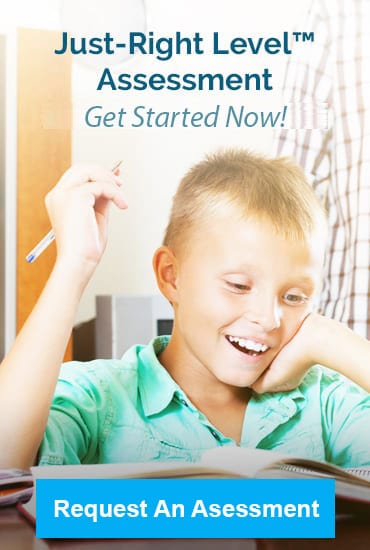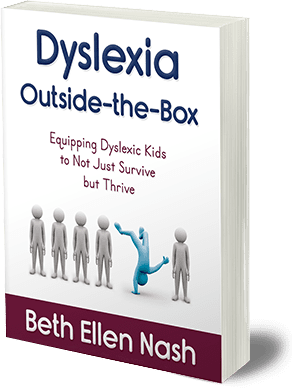Reading Comprehension Strategies

The ultimate goal of reading, of course, is comprehension. All the other core reading skills of phonemic and phonological awareness, phonics, fluency, and vocabulary are building blocks that support comprehension. The following are simple reading comprehension strategies:
- The Davis Picture-at-Punctuation strategy encourages students to use their strong picture-thinking skills to create a picture in their mind each time they reach a punctuation mark. This is to ensure that they understand what’s been read. As they become proficient at the phrase and sentence levels, it can be extended to the paragraph, page, and chapter levels.
- To build context-based problem-solving skills, encourage the student to silently read quickly for context and overall meaning without stopping to figure out every word. This is not the time for working on decoding skills. This type of practice boosts stamina and interest in reading.
- Asking questions is likely the best way to support the growth of comprehension. The “5 Ws” (who, what, when, where, and why), plus “how,” are a great start in constructing questions.
Here are some sample questions:- Who are the main characters? What are they like?
- What is happening in the story?
- What seems to be the problem?
- What might happen next? How did the student come to that conclusion?
- When does the story take place? How is that important to the story?
- How much time is passing?
- Where is the story set? How does the setting of the story impact the telling of the story?
- Why is a character acting a certain way? How did the student come to that conclusion?
Building Reading Comprehension Strategies
It is important to work on reading comprehension strategies for understanding both literature and informational text. Programs Wings to Soar uses that work directly on reading comprehension strategies are Headsprout Reading Comprehension, Lexia, and Moby Max. Reading Plus and MindPlay offer explicit reading comprehension strategies instruction when the student is struggling with the comprehension questions following up the fluency passages. We make recommendations about which combination will best help each student based on assessment of their individual needs.
Audio books
Audio-supported text is an effective aid for many dyslexics in stretching their comprehension skills beyond what they can read independently. Just as a blind student “finger-reads” using Braille, a dyslexic can “ear-read” while listening to audio books, allowing them to access texts that they can’t yet “eye-read.” This provides access to grade-level vocabulary and content so they don’t fall further behind.
Dyslexics should be encouraged to build their ear-reading skills starting in elementary school, concurrent with separate work focusing on strengthening weak eye-reading skills.
By reading along with the highlighted words as they are read aloud in Learning Ally, Bookshare, RAZ-Kids, or any other program that has this feature, the student often improves their eye-reading ability while training their ear-reading. This provides access to grade-level vocabulary and content so they don’t fall further behind. It allows them to build reading comprehension strategies at their intellectual level.
Digital audio texts that can be sped up allow students to train themselves to listen faster than at typical listening speeds. Gradually increase the speed by 10 percent increments. They can train to listen with good comprehension at up to three to five times faster than typical listening speed, bringing their ear-reading speed up to that of a fluent eye-reader.
Sources of audio books
- Mass-market audio libraries such as Audible
- Many libraries carry audio books in various formats
- Digital audio libraries are available to individuals who are blind, physically impaired, or have a learning disability that impairs access to printed text. Someone qualified must sign a form affirming the individual does indeed have a disability.
- Learning Ally has over 80,000 human-narrated audio books. Narration quality varies widely, as these are provided by volunteer readers.
- Bookshare has over 500,000 titles using “high quality” text-to-speech for their recordings.
See also Reading Comprehension Problems and Reading Comprehension Programs.


